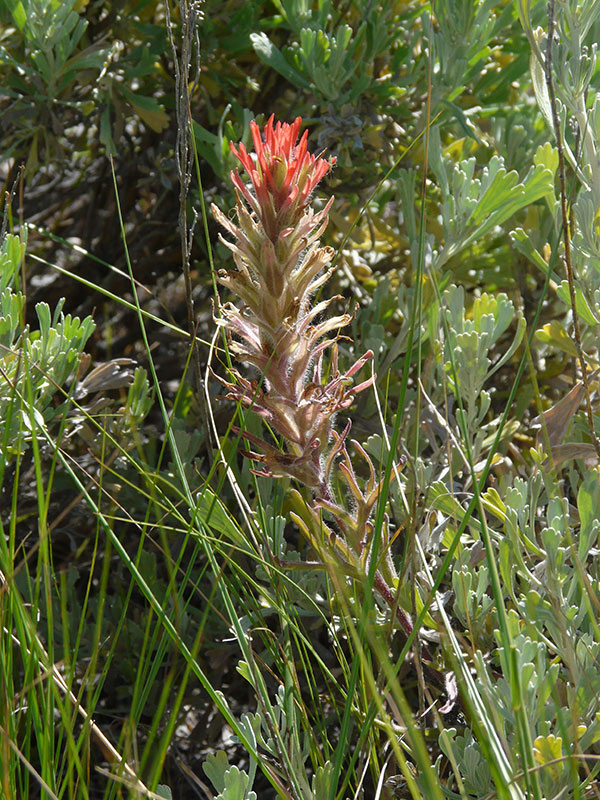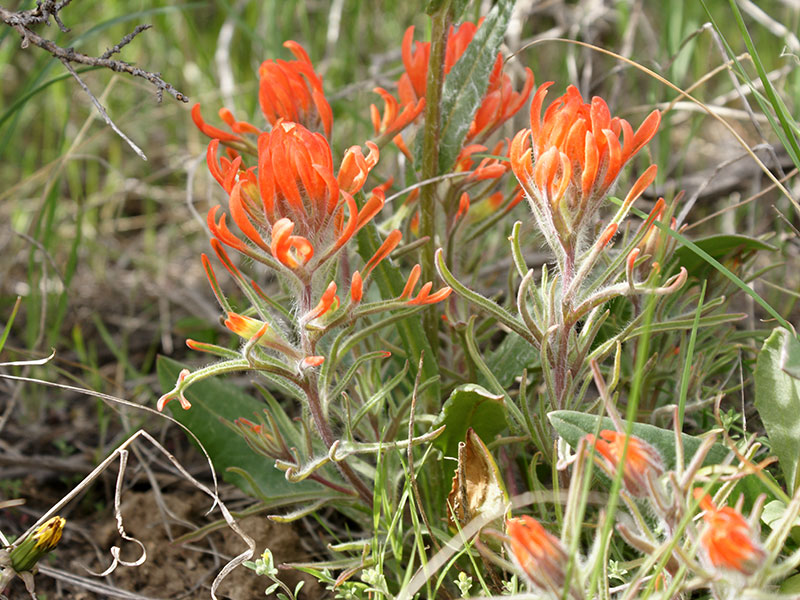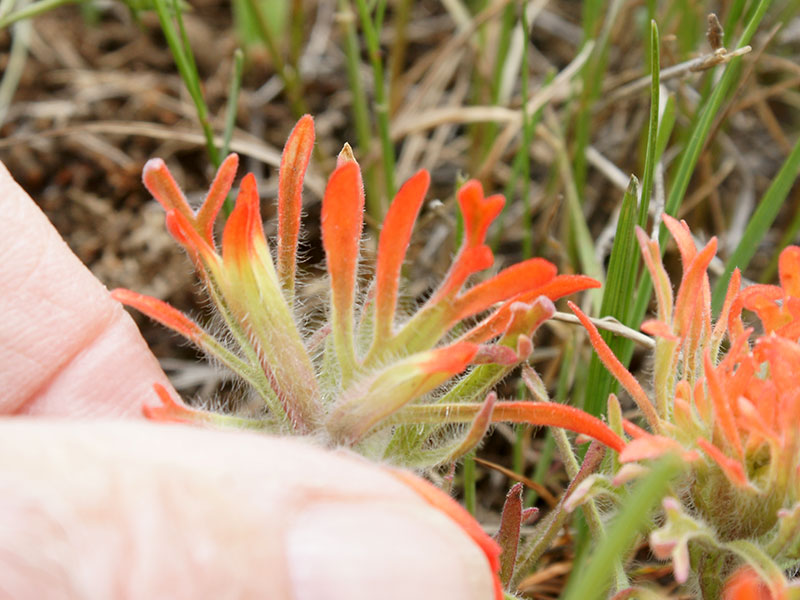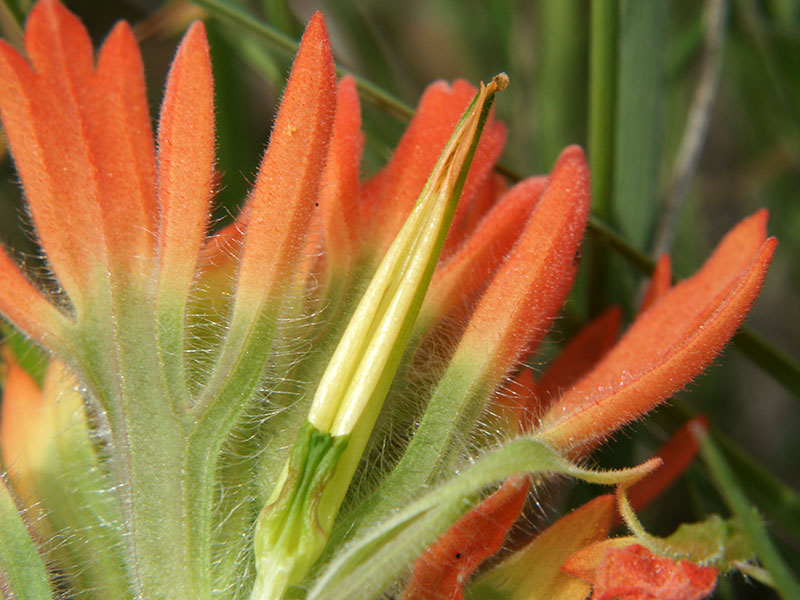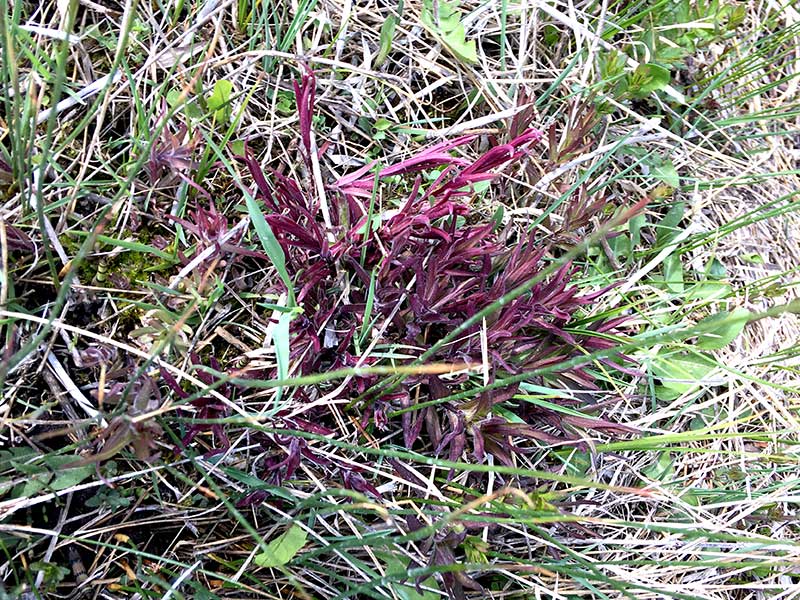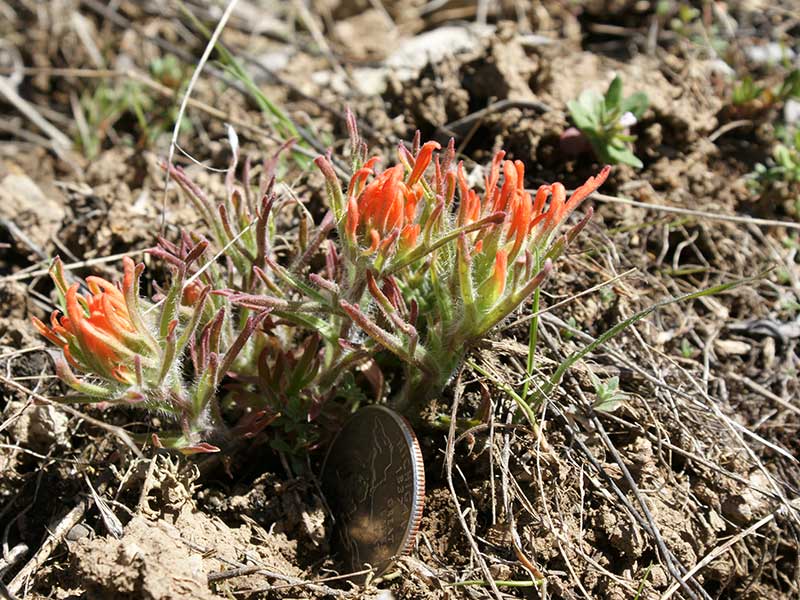Castilleja covilleana / Rocky Mountain paintbrush
- clearly, one of the “Indian paintbrushes”
- early bloomer in the spring, even when quite short
- bright red, orange (sometimes yellow) bracts
- bracts and leaves have 3-7 deep lobes with long, soft hairs
- often grows in clusters
Also known as: Coville’s paintbrush, Coville’s Indian paintbrush
See also: Castilleja spp. / Indian paintbrush
Rocky Mountain paintbrush, Castilleja covilleana is perhaps the only species on the site that is endemic to Idaho, found nowhere else but a small bit of adjacent Montana. Although it is considered localized to central Idaho, it is found at least locally in the Valley.
Of all the paintbrushes, Castilleja spp., this may be the easiest to identify. First of all, it is the earliest to bloom in the spring, usually on rocky slopes with sagebrush. The plant is short and compact at first, but elongates greatly at over a few weeks.
Both the leaves and the bright red, orange, or occasionally yellow bracts are elongated and 3-7 lobed. One of the diagnostic characters of this species is that the central lobe is about the same width as the other lobes rather than much wider. Another diagnostic character is that the leaves and bracts are covered with long, soft (as opposed to stiff or pointy) hairs.
The flowers of Rocky Mountain paintbrush, like other paintbrushes, are tightly rolled cylinders with the stigma sticking out the end. In this case, the bracts are at least as long as the flowers, so the latter can be hard to see.
As for growth habit, C. covilleana is a perennial that grows as clusters of several unbranched and erect stems.
Because of its limited range, there is always concern for its conservation status. In its small range in Montana, it is considered “vulnerable”. but there is no official state status rank in Idaho. In both states, it is threatened by timber harvesting and knapweed invasion.
| Color | |
|---|---|
| Family | |
| Blossom size | |
| Inflorescence size | |
| Inflorescence type | |
| When? | |
| Where? |
